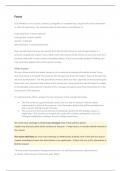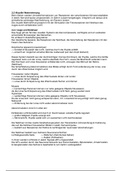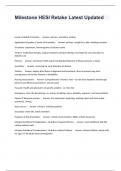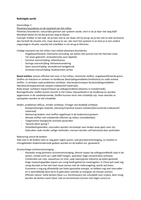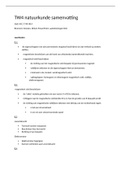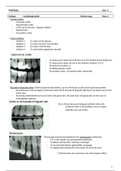Focus
[C1] Whether it is in a clause, sentence, paragraph, or complete text, we generally write information
in order of importance. The standard order of information is the balance of
most important → least important
most general → more specific
specific → detailed
oldest (known) → newest (unknown)
Here, we will look at how we can deviate from the standard structure and arrange clauses in a
sentence to guide the reader’s focus. Most of this information will be familiar to you since much of it
has been dealt with in other sections throughout Basics. If you have already worked in Writing, you
may even have applied some of the options already.
Divide to guide
We can influence what the reader focuses on in a sentence by moving information around. Some
structures allow us to ‘divide’ the sentence into two parts to direct the reader’s focus to the part that
we want to emphasise*. The first part of the sentence then acts like a sign with an arrow pointing the
way to the more important information in the second part. Using structures like this helps the reader
to immediately understand the intention of the message and signals what they should look for in the
second part of the sentence.
To understand the effect, compare the two sentences in the example box below.
• The first sentence is grammatically correct, but it is only at ‘because’ that the reader
understands the point of the sentence. Any information before that will be somewhat lost,
and a second reading may be necessary.
• The structure of the second sentence immediately clarifies the aim: giving a reason or
explanation. This functions as a signal; the reader will continue reading with a focus on
finding an explanation, making a second reading unnecessary.
We never have meetings on Wednesdays because most of the staff are absent.
(reader only discovers point of the sentence at ‘because’ → may have to re-read for details relevant to
the reason)
The reason that/why we never have meetings on Wednesdays is (that) most of the staff are absent.
(reader immediately knows that what follows is an explanation → filters the rest of the information to
find the reason)
*Should you be interested in the grammatical term, we call these structures cleft sentences,
or pseudo cleft sentences if they start with ‘What’.
, There are several structures we can use in this way. What they have in common is that the first part
of the sentence is connected to the part we want to emphasise by is/was.
• To emphasise a person, thing, reason, place, or time, we can use structures with that,
which, where, when, who, or why (see relative clauses to learn more about which form is
appropriate in different contexts). We use that, which, or who in a more general way. To be
more specific, we can use where, when, or why. These structures then function as the subject
of the sentence.
o Structures used this way are The reason that/why*, The place that/where/which, The
moment that/when, The person that/who etc. For references to time, we can replace
‘moment’ with ‘hour’, ‘day’, ‘month’ etc.
o Using these structures often leads to wordiness, so use them with caution. Before
deciding to use them, try to rewrite your sentence for clarity and conciseness.
o A point to note is that the reason why is somewhat controversial in the language
world. While many grammarians believe that it is repetitive, and therefore bad form,
others embrace it. When in doubt, in formal texts such as reports or essays, using the
slightly more formal the reason that is always correct.
The reason that/why* I am writing to you is to suggest some changes that should be made in the
brochure.
The place that/where the meeting is held is always well-ventilated. (OR The place which the meeting
is held in is always well-ventilated.)
The moment that/when the company was officially declared bankrupt was 4pm on Tuesday 13
March.
The person who/that always wrote the message to the stockholders was Brian. (note that ‘who’ is
preferred in formal writing)
*This structure is similar to the one below in its emphasis on the cause of something, but here the
sentence is not preceded by one mentioning the effect. Note that here we do not use The reason
why is because.
• To focus on the cause of something, we can use The reason/ The problem/ The
fact + is + that at the start of a sentence. The emphasis is then placed on the cause at the
end. This structure often follows a sentence describing the effect.
The reason is that* companies are not
He cannot find a suitable job.
hiring in this economy.
(effect)
(cause #1)
The problem is that he is overqualified for some and
underqualified for others.
(cause #2)
[C1] Whether it is in a clause, sentence, paragraph, or complete text, we generally write information
in order of importance. The standard order of information is the balance of
most important → least important
most general → more specific
specific → detailed
oldest (known) → newest (unknown)
Here, we will look at how we can deviate from the standard structure and arrange clauses in a
sentence to guide the reader’s focus. Most of this information will be familiar to you since much of it
has been dealt with in other sections throughout Basics. If you have already worked in Writing, you
may even have applied some of the options already.
Divide to guide
We can influence what the reader focuses on in a sentence by moving information around. Some
structures allow us to ‘divide’ the sentence into two parts to direct the reader’s focus to the part that
we want to emphasise*. The first part of the sentence then acts like a sign with an arrow pointing the
way to the more important information in the second part. Using structures like this helps the reader
to immediately understand the intention of the message and signals what they should look for in the
second part of the sentence.
To understand the effect, compare the two sentences in the example box below.
• The first sentence is grammatically correct, but it is only at ‘because’ that the reader
understands the point of the sentence. Any information before that will be somewhat lost,
and a second reading may be necessary.
• The structure of the second sentence immediately clarifies the aim: giving a reason or
explanation. This functions as a signal; the reader will continue reading with a focus on
finding an explanation, making a second reading unnecessary.
We never have meetings on Wednesdays because most of the staff are absent.
(reader only discovers point of the sentence at ‘because’ → may have to re-read for details relevant to
the reason)
The reason that/why we never have meetings on Wednesdays is (that) most of the staff are absent.
(reader immediately knows that what follows is an explanation → filters the rest of the information to
find the reason)
*Should you be interested in the grammatical term, we call these structures cleft sentences,
or pseudo cleft sentences if they start with ‘What’.
, There are several structures we can use in this way. What they have in common is that the first part
of the sentence is connected to the part we want to emphasise by is/was.
• To emphasise a person, thing, reason, place, or time, we can use structures with that,
which, where, when, who, or why (see relative clauses to learn more about which form is
appropriate in different contexts). We use that, which, or who in a more general way. To be
more specific, we can use where, when, or why. These structures then function as the subject
of the sentence.
o Structures used this way are The reason that/why*, The place that/where/which, The
moment that/when, The person that/who etc. For references to time, we can replace
‘moment’ with ‘hour’, ‘day’, ‘month’ etc.
o Using these structures often leads to wordiness, so use them with caution. Before
deciding to use them, try to rewrite your sentence for clarity and conciseness.
o A point to note is that the reason why is somewhat controversial in the language
world. While many grammarians believe that it is repetitive, and therefore bad form,
others embrace it. When in doubt, in formal texts such as reports or essays, using the
slightly more formal the reason that is always correct.
The reason that/why* I am writing to you is to suggest some changes that should be made in the
brochure.
The place that/where the meeting is held is always well-ventilated. (OR The place which the meeting
is held in is always well-ventilated.)
The moment that/when the company was officially declared bankrupt was 4pm on Tuesday 13
March.
The person who/that always wrote the message to the stockholders was Brian. (note that ‘who’ is
preferred in formal writing)
*This structure is similar to the one below in its emphasis on the cause of something, but here the
sentence is not preceded by one mentioning the effect. Note that here we do not use The reason
why is because.
• To focus on the cause of something, we can use The reason/ The problem/ The
fact + is + that at the start of a sentence. The emphasis is then placed on the cause at the
end. This structure often follows a sentence describing the effect.
The reason is that* companies are not
He cannot find a suitable job.
hiring in this economy.
(effect)
(cause #1)
The problem is that he is overqualified for some and
underqualified for others.
(cause #2)

